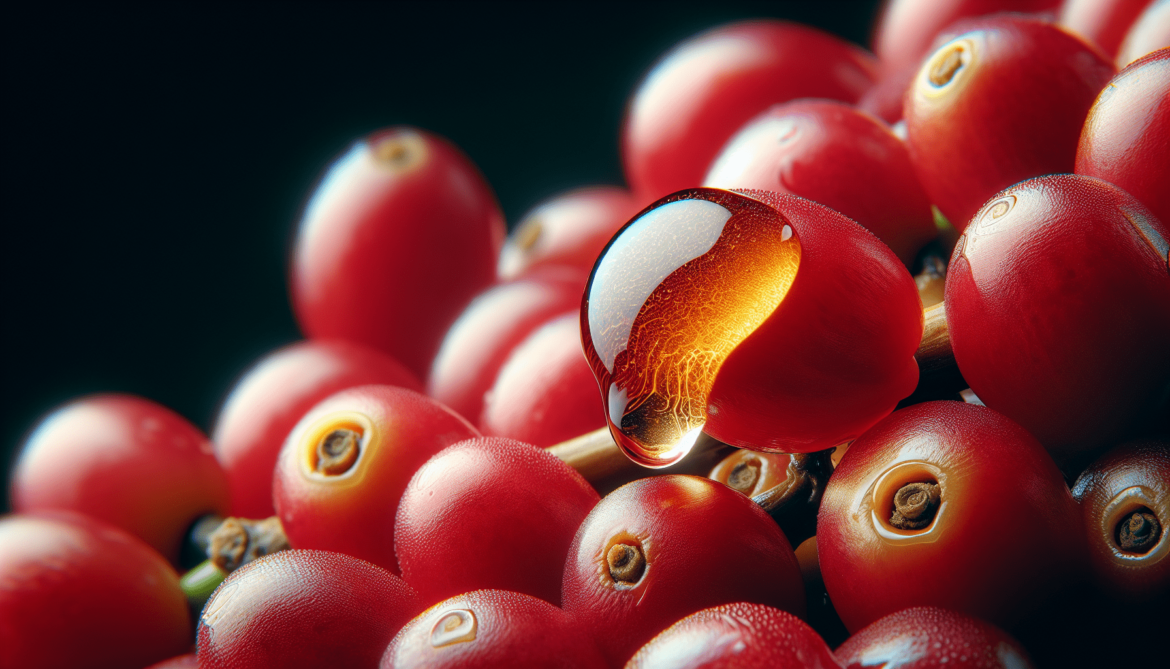Welcome to an article that will delve into the fascinating world of coffee processing methods and how they can impact the flavor profiles of your beloved brew. From traditional methods like washed and natural processing to newer innovations such as honey and anaerobic fermentation, each step in the coffee processing journey plays a crucial role in the final cup of coffee you savor. Join us as we explore the influence of these methods on your daily caffeine fix and discover how the choices made during processing can truly elevate your coffee experience. Let’s raise our mugs and dive into the world of coffee processing together!
The Influence Of Coffee Processing Methods
Do you ever wonder how the processing method of coffee beans can impact the flavor and quality of your favorite morning brew? From washed to natural and honey processed, each method brings out unique characteristics in the beans that ultimately affect the taste of your coffee. Let’s dive into the world of coffee processing methods and explore how they influence the final cup of coffee that you enjoy each day.
Washed Processing Method
When coffee beans are processed using the washed method, they undergo a meticulous process that involves removing the cherry from the beans before they are dried. This results in a brighter and cleaner cup of coffee with distinct acidity and floral notes. The washed processing method is favored by many specialty coffee producers for its ability to highlight the unique flavors of the beans.
Have you ever tasted a coffee with vibrant acidity and floral aromas? Chances are, it was processed using the washed method. This processing technique is popular among coffee enthusiasts who appreciate the nuanced flavors that it brings out in the beans.
Natural Processing Method
In contrast to the washed method, the natural processing method involves drying the coffee beans with the cherry intact. This results in a coffee that is often described as fruit-forward with a heavy body and sweet taste. The natural processing method is widely used in countries like Ethiopia and Brazil, where the climate is conducive to drying coffee cherries.
If you enjoy coffee with fruity and sweet flavors, you’ll likely appreciate the natural processing method. This technique allows the beans to absorb the sugars from the cherry during the drying process, resulting in a unique flavor profile that is distinct from washed coffees.
Honey Processing Method
The honey processing method falls somewhere between washed and natural processing, as it involves removing the cherry from the beans but leaving some of the mucilage intact during drying. This results in a coffee that is known for its silky body and complex flavor profile. The honey processing method is gaining popularity among coffee producers for its ability to bring out the best of both washed and natural processing methods.
Have you ever tried a coffee with a silky smooth body and complex flavor profile? It may have been processed using the honey method. This unique processing technique allows the beans to develop rich flavors while maintaining a clean cup profile.
Comparison of Coffee Processing Methods
To better understand how each processing method impacts the flavor of coffee beans, let’s compare the characteristics of washed, natural, and honey processed coffees in a table:
| Processing Method | Flavor Profile | Body | Acidity |
|---|---|---|---|
| Washed | Bright, clean, floral | Light to medium | High |
| Natural | Fruity, sweet | Full | Low to medium |
| Honey | Silky, complex | Medium to full | Medium to high |
As you can see, each processing method brings out different flavors, body, and acidity in the coffee beans. The choice of processing method plays a significant role in defining the final cup of coffee that you enjoy.
Impact of Processing Methods on Coffee Quality
The processing method of coffee beans not only affects the flavor profile but also plays a crucial role in determining the overall quality of the coffee. Factors such as the climate, altitude, and processing equipment used can influence the outcome of the final product. Coffee producers carefully select the processing method based on these factors to ensure that the beans reach their full potential.
When coffee beans are processed using the washed method, they are often sorted meticulously to remove any defects and inconsistencies. This attention to detail results in a higher-quality coffee that is free from impurities and off-flavors. On the other hand, natural and honey processed coffees may exhibit a wider range of flavors due to the fermentation of sugars in the cherry during drying.
Quality Assessment of Coffee Processing Methods
To evaluate the quality of coffee processing methods, coffee experts use a standardized grading system that considers factors such as flavor, aroma, body, and acidity. The Specialty Coffee Association (SCA) has established protocols for cupping sessions where coffee samples are blindly tasted and scored based on these criteria.
By assessing the quality of coffee beans processed using different methods, coffee producers can make informed decisions about the processing techniques that yield the best results. This quality assessment process ensures that consumers receive a consistent and enjoyable cup of coffee every time.
Sustainability and Processing Methods
In recent years, there has been a growing emphasis on sustainability in the coffee industry, with a focus on environmentally friendly and socially responsible practices. Coffee producers are increasingly adopting sustainable processing methods that minimize waste and reduce the environmental impact of coffee production.
The washed processing method, for example, often requires large amounts of water to remove the cherry from the beans. In regions where water scarcity is a concern, this can pose challenges for sustainable coffee production. To address this issue, some producers have implemented water-saving techniques or invested in eco-friendly processing equipment to reduce water usage.
On the other hand, natural and honey processing methods require less water and energy, making them more sustainable options for coffee producers. By embracing these environmentally friendly processing methods, coffee producers can reduce their carbon footprint and contribute to a more sustainable coffee industry.
Sustainable Practices in Coffee Processing
To promote sustainability in coffee processing, some producers have implemented the following practices:
- Water recycling systems to minimize water usage in washed processing
- Solar drying beds to reduce energy consumption during the drying process
- Composting of coffee cherry pulp to create organic fertilizer for coffee farms
By adopting these sustainable practices, coffee producers can improve the environmental impact of their operations while producing high-quality coffee beans that are enjoyed by consumers around the world.
Choosing the Right Coffee Processing Method
When selecting coffee beans for your morning brew, it’s essential to consider the processing method used to determine the flavor profile that best suits your preferences. Whether you prefer a bright and acidic cup or a smooth and fruity one, the processing method plays a significant role in shaping the taste of your coffee.
If you enjoy coffees with vibrant acidity and floral aromas, opt for beans processed using the washed method. For those who prefer fruit-forward and sweet flavors, natural processed coffees are the way to go. And if you’re looking for a coffee with a silky body and complex flavor profile, give honey processed beans a try.
Tips for Choosing Coffee Beans Based on Processing Method
- Experiment with different processing methods to discover your favorite flavor profiles
- Consider the origin of the coffee beans and the climate in which they were grown
- Look for specialty coffee beans that are processed with care and attention to detail
By exploring the world of coffee processing methods and trying out different beans, you can enhance your coffee experience and discover new and exciting flavors that will delight your taste buds.
Conclusion
The influence of coffee processing methods on the flavor, quality, and sustainability of coffee beans cannot be understated. From washed to natural and honey processed coffees, each processing method brings out unique characteristics that contribute to the taste of your favorite morning brew.
By understanding the differences between processing methods and how they impact the final cup of coffee, you can make informed choices when selecting beans for your coffee routine. Whether you prefer a bright and acidic coffee or a smooth and fruity one, there is a processing method that will suit your taste preferences.
Next time you savor a cup of coffee, take a moment to appreciate the journey that the beans have taken from the farm to your cup. The processing method used plays a crucial role in shaping the flavors and qualities that make each cup of coffee a unique and enjoyable experience. Cheers to the wonderful world of coffee processing methods and the delicious cups of coffee that they bring to life!



